Behind the scenes of sci-fi gem Europa Report
New York studio Phosphene reveals how it created out-of-this-world effects for Sebastián Cordero's sci-fi film Europa Report.
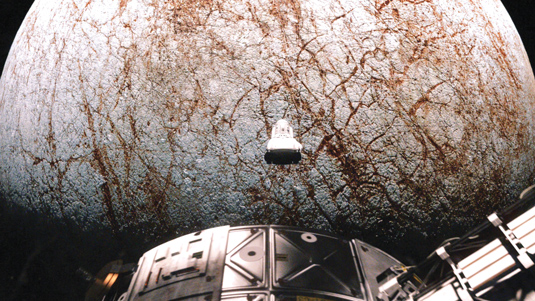
Gravity may be the spacebound thrill ride that grabbed all the column inches and plaudits last year, but for fans of near-plausible sci-fi, 2013 was also notable for the launch of Europa Report. While reportedly produced for less than tenth of Alfonso Cuarón’s film, Europa Report shares preoccupations with rigorous scientific detail and the mind-bending isolation of space.
New York studio Phosphene was responsible for creating the movie's pristine visual effects. Founded in 2008, the studio has majored on often 'invisible' work for a range of feature and television projects. "This is something of a departure for us," notes studio co-founder John Bair. "We've done hard body and environmental work before, but not so much in terms of naturalistic landscapes. Creature work is also relatively new for us."
Bair does have experience with science documentaries, however, so when visual effects producer Mark Russell and director Sebastián Cordero first approached them he says it immediately felt like a natural fit.
"The budget was a challenge, though, especially considering the nature of the film," he says. "When we were shooting the aim was to show very little. But while the 'contained' documentary approach largely based around locked-off cameras stayed the same, the scope increased.
Branching out
"Suddenly we had to create CG astronauts for the wider shots of the spacewalk, for example. The budget was bumped up a little, but we still had to be economical with how many shots we added in order to expand the story," says Bair.
Phosphene hadn't originally expected to handle the movie's creature work. "We weren't sure if a specialist creature house would handle it, but since we were working on some shots earlier where its bioluminescence is visible below the ice, it just seemed like a natural progression."
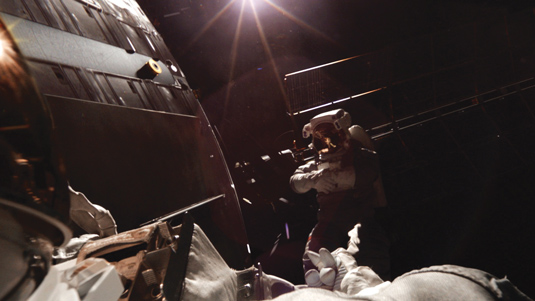
To develop the look of the spacecraft that transports the film's crew on their journey to Jupiter's moon Europa, the Phosphene team took a basic silhouette created by the film's art department and then began working it into a believably detailed creation using every scrap of available real-life reference, including archive material provided by Nasa and the Jet Propulsion Laboratory.
"Even though a craft might look like its components have the same tone from a distance, once you get up close you realise there are so many parts, made in so many countries and with contrasting styles,
that are all pieced together," says Bair.
"Our team had a lot of fun digitally kit-bashing all these different 1970s and 1980s components together to create something that looked cool. We also worked closely with the director of photography to determine the position of the fixed cameras pointing at the ship, so we knew where to focus on adding complexity."
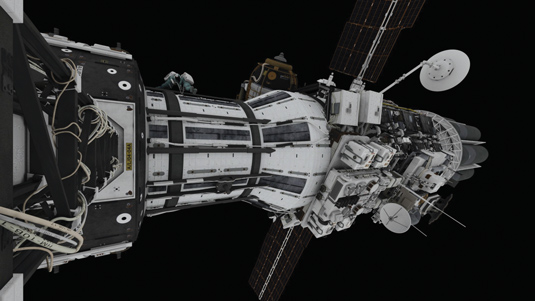
Clever tricks
When it came to rendering the craft, Phosphene opted for a realistic hard-lit approach. "Reference imagery of the spacecraft had blue sphere lighting from the Earth, whereas our shots needed to look like they’re a long way into the solar system," says Bair.
"Our setup made rendering simple but hard lighting can look quite artificial, so we added a little bounce and light bleed here and there, without going down the whole GI route."
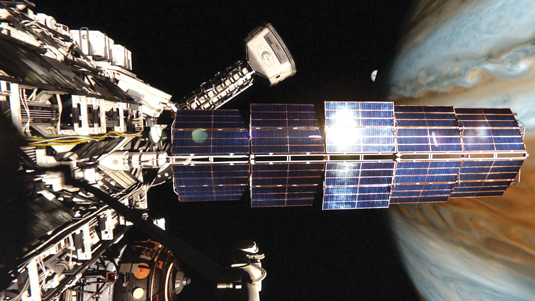
For the large-scale views of Europa, Nasa's Galileo missions from the 1990s provided the best reference, enabling Phosphene to build a rudimentary map to take into Photoshop, scale up and add further detail to. Textures of scratched metal along with airborne photography of deserts and ice-covered areas of the Earth were all added to the mix. "We then took a stab at building a gigantic height map, adding more detail and displacement in Mudbox," says Bair.
For views down on the moon's surface, he says they worked with a proposed Nasa landing site, so the environment seen in the movie does actually roughly align with what exists. "We then basically took the relevant chunk from our sphere, blew it up and went crazy in Mudbox again."
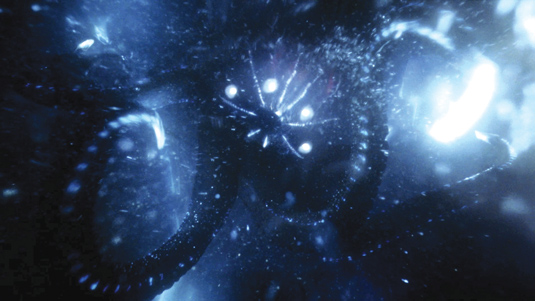
Bair explains that the creature's development was a challenge: the initial designs posited a jellyfish-like creature, but then the producers decided they wanted something resembling a manta ray.
"We took that model pretty far, but in motion tests it just didn’t look threatening," says Bair. "With just three weeks left, the idea came: something octopus-like surfaced. We took a stab at the design, produced an animatic that showed it definitely worked and jumped right in. In the movie it's only clearly visible for about a second, which is more than we'd expected. Of course, everybody will freeze frame it!" If you haven't already, you should.
Words: Mark Ramshaw
This article originally appeared in 3D World issue 179.

Thank you for reading 5 articles this month* Join now for unlimited access
Enjoy your first month for just £1 / $1 / €1
*Read 5 free articles per month without a subscription

Join now for unlimited access
Try first month for just £1 / $1 / €1
Get the Creative Bloq Newsletter
Daily design news, reviews, how-tos and more, as picked by the editors.

The Creative Bloq team is made up of a group of art and design enthusiasts, and has changed and evolved since Creative Bloq began back in 2012. The current website team consists of eight full-time members of staff: Editor Georgia Coggan, Deputy Editor Rosie Hilder, Ecommerce Editor Beren Neale, Senior News Editor Daniel Piper, Editor, Digital Art and 3D Ian Dean, Tech Reviews Editor Erlingur Einarsson, Ecommerce Writer Beth Nicholls and Staff Writer Natalie Fear, as well as a roster of freelancers from around the world. The ImagineFX magazine team also pitch in, ensuring that content from leading digital art publication ImagineFX is represented on Creative Bloq.
